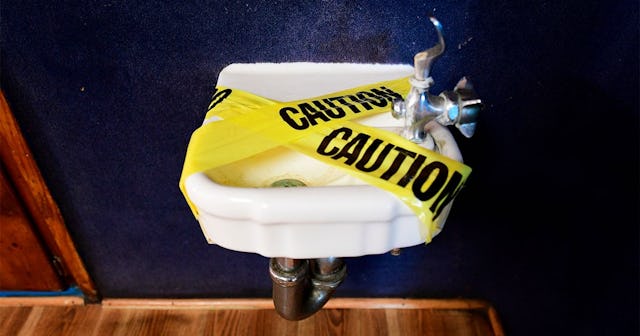CDC Guidelines Are Really Pushing To Get Kids Back In Schools

The CDC wants to keep kids safe, but says part of that is getting them back to school
The battle over when and how to reopen U.S. schools wages on. As the Trump administration pushes for in-person classes to resume in the fall — which means classes could start in as little as a few weeks in some districts — there are still many questions about children’s role in spreading COVID-19 and whether in-person instruction is safe at this point. Finally, the CDC has weighed in with its own set of guidelines for reopening schools — really pushing the importance of getting kids back into physical classrooms as soon as possible.
“Schools play a critical role in supporting the whole child, not just the academic achievement of students,” the CDC writes, pointing out how schools affect the “social, emotional, and mental” health of children.
“The best available evidence indicates if children become infected, they are far less likely to suffer severe symptoms,” the CDC site continues. “At the same time, the harms attributed to closed schools on the social, emotional, and behavioral health, economic well-being, and academic achievement of children, in both the short- and long-term, are well-known and significant.”
The CDC is focusing heavily on the social, mental, and emotional impact of schools, without seeming to give nearly as much consideration to the physical risk — to students, their families, and anyone else they come into contact with in their communities — of filling classrooms again while a deadly pandemic rages on. The guidelines are already being widely criticized by scientists in various media outlets for their “political tone” and departure from previous internal communication in which the CDC classified schools as “highest risk” for community spread of COVID-19.
“This guidance is intended to aid school administrators as they consider how to protect the health, safety, and wellbeing of students, teachers, other school staff, their families, and communities and prepare for educating students this fall,” the CDC writes, before getting into the details of how it says instruction can resume while also following the agency’s already existing guidelines for social distancing and other important measures to prevent community spread of COVID-19.
The CDC says it’s up to teachers and administrators to disinfect classroom and school surfaces regularly, and ensure their students are practicing good hygiene and staying an appropriate distance from one another.
As they put it on the new guidelines website, it’s up to administrators, teachers and staff to ensure they are:
- “Concurrently implementing multiple strategies in school to prevent the spread of COVID-19 (e.g., social distancing, cloth face coverings, hand hygiene, and use of cohorting)”
- “Best practices for your school and community to communicate, educate, and reinforce personal protective behaviors to prevent the spread of COVID-19 in school and in the community”
- “Integrating strategies to reduce COVID-19 transmission into co-curricular and extracurricular activities (e.g., limiting participation in activities where social distancing is not feasible)”
Anyone who’s ever been in a classroom of kids under the age of about 10 knows how difficult it’s going to be to enforce hand-washing for 20 seconds and staying six feet apart.
Other CDC guidelines suggest using unused or underutilized buildings to hold classes with fewer kids, moving class outdoors when possible, and keeping children in “pods” that keep the same kids together throughout the school day, limiting exposure to other students and making contract tracing easier. There are also new CDC guidelines for what to do if someone in the school tests positive — the agency is trying to tell us there’s no need to shut down an entire school if a student or staff member tests positive, but will any parent agree with that?
According to several recent polls, nearly two-thirds of parents say it’s too soon to open schools safely.